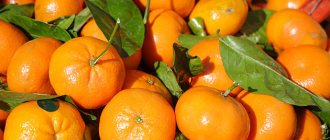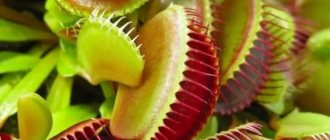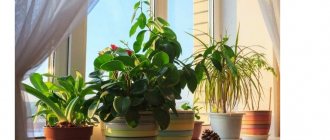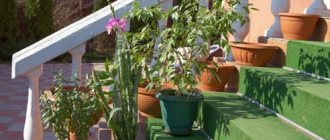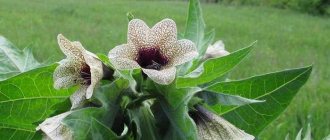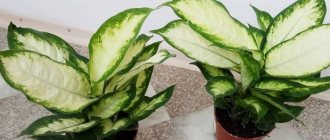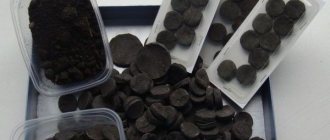Most of us have houseplants. Some have the simplest and most unpretentious, while others have exotic and rare ones. And in the homes of passionate flower growers you can find entire collections of extraordinary specimens.
And how sometimes you want to plant a new flower on the windowsill, a colorful photograph of which you saw on the Internet. It seems that it’s simple - you just need to choose the seeds of the variety you like in the online store, order them, and then sow them and wait for germination. In fact, growing indoor plant seeds is not easy. There are many subtleties and nuances that you will learn by reading the article. Let's get started...
First of all, you need to find out the advantages and disadvantages of growing indoor plants from seeds, as well as which house flowers reproduce well in this way and which do not.
Medlar
The fruits of this exotic plant taste like pineapple and apple. By planting a medlar seed, you will be able to harvest in 4-6 years, provided proper care and conditions that are comfortable for the plant. Japanese medlar is more common and is more often found in stores.
- After purchasing the fruit, you need to take out the seeds and dry them for 3 days;
- then the planting material is scarified with sandpaper and soaked in warm water (if you skip this step, it will take longer for seedlings to emerge);
- Next, the seeds are placed in containers filled with fertile soil to a depth of 2-3 cm.
Caring for medlar involves protecting against sunburn and keeping the plant at a temperature of +18°C and above. In winter, she prefers a cool environment with a temperature of +5...+10°C. The plant needs high humidity and moderate watering, fertilizing 2 times a month.
Conditions for growing seeds at home (photo)
- Temperature requirements . Warm-loving crops are planted in open ground only when the threat of frost has passed, otherwise the plants will simply get sick or die. Therefore, it is important to correctly calculate the time of transplantation and plant the seeds in open ground when the weather is already warm enough. To be on the safe side, especially temperature-sensitive plants can be planted when cold weather is no longer expected.
- Age of seedlings . Each plant has its own period of transplantation into open ground. At this time, they tolerate the change most painlessly and settle down better in the new place. It all depends on the growing season. The packaging with seeds often indicates the approximate time of transplantation, and it is worth focusing on it, not forgetting to take into account weather conditions.
- Conditions of detention . In order to plant tomatoes in a greenhouse at the beginning of May, you can start sowing already in February, and if the seedlings are intended for open ground, you will have to wait until the end of March in order to transplant the stronger seedlings in June. It is important to take into account such individual factors as protection from the cold, covering, heating in order to calculate the optimal sowing time, because if young plants are not strong enough by the time the climate changes and they move to a permanent place of residence, they will get sick and are unlikely to produce a good harvest. The same applies to overgrown seedlings, which are already too old to safely endure such stress.
- Germination period . It is no secret that different seeds germinate at different times, but if you do not take this factor into account, you can irrevocably lose precious time. In some plants, the first shoots appear after 4-5 days, while in others only after 12-15 days.
The rate of germination is influenced by many conditions : pre-sowing treatment, characteristics of the variety, temperature and soil composition. To obtain faster results, you can use special garden accelerators, such as zircon or immunocytophyte .
The process of obtaining a seedling from a seed
Expected harvest time
By changing the sowing time, you can influence the time of harvest. To increase the fruiting time, you can plant seeds of the same variety in several stages. For example, take seeds of an early ripening variety and plant them as early as possible, and after a while plant a second batch. Seedlings from the first batch are also transplanted into open ground earlier. The plants will also bear fruit in turns.
Duration of summer . In regions with long and warm summers, the seeds of some crops can be sown on the site immediately, skipping the seedling stage. Varieties with a short growing season can also be planted immediately in open ground.
Under optimal conditions for seeds, seedlings grow quickly and rarely get sick
Deepening
When planting, it is not recommended to bury the seeds too deeply. If the seed is planted too deep, the plant may not have enough strength to break through the layer of soil and then the seedlings will have to wait a long time, if they appear at all. Seed bags often contain information about the depth to which the planting material should be immersed, but if there are no instructions, then you can use the universal rule: the planting depth should be no more than 2 seed diameters .
Important! Very small seeds are not buried, but sown on the surface of the soil and not covered with soil. For convenience, such seed material is mixed with dry sand. Light-germinating seeds also do not require planting and require direct sunlight to germinate.
The larger the seed, the larger the planting hole needs to be made.
Orange
Orange seeds planted at the end of February germinate in 1-1.5 months. Select the largest seeds from a healthy and beautiful fruit, wash them thoroughly and soak in water for 10-12 hours. After this, place the planting material in individual containers, deepening it 1 cm.
For comfortable orange development, a universal soil is suitable. Both a lack of moisture and its excess are harmful to the plant. In summer, the tree should be placed on the balcony, and in winter, daylight hours should be extended to 12 hours. Maintain high humidity and fertilize 2 times a month.
The seed will grow into a wild plant that can bloom only after 10 years. And the number of fruits on it is unpredictable.
Balsam
Balsam seeds can be purchased at a specialty store. Their sowing is carried out in spring. To begin with, they are kept for a quarter of an hour in a pale pink solution of potassium manganese, and then washed in clean and warm water. For sowing, you can take any ready-made soil mixture that is suitable for growing flowering indoor crops, or you can take sand mixed with peat. Fill the box with substrate, moisten it and sow the seeds, but you don’t need to deepen them too much. The crops are covered with glass on top and placed in a cool place (18 to 20 degrees).
The first seedlings should appear in about half a month. They are picked into separate pots only after they have formed a pair of true leaf blades.
Lychee
The Chinese plum is an ideal houseplant. Its development is slow, and fruiting is possible only 10 years after planting.
If you have a lychee seed, plant it as soon as possible. Over time, its germination potential will become less and less. Lychee does not require much space; several seeds can be placed in one container at once.
Then the plantings are covered with film and moved to a warm room. The film is removed when sprouts appear. This process takes about 2 weeks.
The transplant will not be necessary soon: only when the lychee grows to 20 cm.
What indoor plants can be obtained from seeds?
Not all house flowers are easily propagated by seeds. Plants whose seeds germinate quickly and have good survival rate include: abutilon, asparagus, dracaena, schefflera, pelargonium, balsam, crossandra.
There is a separate group of indoor plants whose seeds take a very long time to germinate. These are nolina, brovallia, various types of cyclamens, Washingtonia and other palm trees. An inexperienced gardener, without waiting for the sprouts, sometimes believes that the seed has died. In fact, development occurs very slowly and takes a long time.
Below is a table of the germination time of seeds of some indoor plants.
| House plants | Fast germination (4-12 days) | Average germination (12-17 days) | Slow germination (from 20 days) |
| Abutilone | + | ||
| Adenium | + | ||
| Agave | + | ||
| Balsam | + | ||
| Begonia | + | ||
| Washingtonia | + | ||
| Gardenia | + | ||
| Hibiscus | + | ||
| Indoor pomegranate | + | ||
| Crassula | + | ||
| Oleander | + | ||
| Pelargonium | + | ||
| Sansevieria | + | ||
| Streptocarpus | + | ||
| Fatsia | + | ||
| Date palm | + | ||
| Hamerops | + | ||
| Cyclamen | + | ||
| Cissus | + |
There are representatives of home flora who are very demanding on the quality of planting material. For example, hibiscus, gardenia, Murraya, coffee tree, and adenium practically do not grow from old seeds.
And finally, some plants are very difficult to obtain from seeds. These species include cacti, myrtle, bougainvillea, and fuchsia.
Avocado
The goal of gardeners planting avocados is not to collect fruits, but to gain new experience. It is unlikely that this plant will bear fruit at home.
The simplest and most obvious way to grow an avocado is to germinate the seeds in a container of water.
- To create a supporting structure, 3-4 toothpicks are placed in the blunt part.
- And the bone itself should be only a third immersed in water.
- After a few weeks, young roots will form, and then a strong sprout.
- When it stretches to 5 cm, it’s time to place the seed in a container with soil.
The plant needs a moist environment and bright light. Too high a temperature is detrimental to avocados; optimal conditions are +16...+20°C. During the period of active development, it is necessary to apply fertilizers and pinch out the upper parts of the shoots.
Soil selection
If you are a meticulous and conscientious owner, you will not buy soil. And cook it yourself. Making seeding soil is not difficult; just mix garden soil, peat and river sand in equal parts. Although in any agricultural store you can purchase soil from domestic producers. It already contains everything you need, in equal proportions. The most popular brands of soil:
- Bogatyr.
- Terra Vita.
- Flora's Gold and others.
Mandarin
Even a novice gardener can cope with growing a tangerine tree. This citrus fruit holds the record for the fastest germination rate. Having created all the conditions for the plant, you will notice sprouts already 3-4 weeks after planting.
The plant needs an abundance of moisture and light, transplanting into larger containers as it develops. An alternative to replanting for mature trees is to change the top layer of soil. Moving to a new pot can be very stressful for your plants.
Plumeria
Another representative of tropical vegetation is plumeria. This amazingly beautiful flowering plant is also called frangipani. The flowers, opening, exude an incomparable, exotic aroma. In addition to the classic white, the flower has pink, crimson, yellow and even orange colors in its “reserve”.
Plumeria. © Jacob Tidwell
Getting it from a seed is not at all difficult, and an adult plant will not cause any trouble. Frangipane grows very quickly, reaches impressive sizes (up to 2 meters), requires frequent replanting and a considerable area indoors, abundant watering and a sunny location.
Grapefruit
An important step in planting grapefruit is choosing the seed. It should be large, and the fruit should be freshly cut. If the planting material dries out, there is a high probability that it will not germinate.
Caring for grapefruit is similar to growing other citrus fruits, and the gardener’s task is to create conditions similar to subtropical ones. This way the plant will feel comfortable.
Once grafted, you will be able to harvest from the tree.
Productivity of varieties
When choosing a suitable variety for planting, they often focus on its yield. But there is one important nuance: high-yielding varieties are more demanding in terms of compliance with growing conditions.
If the quality of the soil, temperature and fertilizers do not meet the requirements of the plant, then it will not produce such a rich harvest as stated. Low-yielding varieties are less demanding, will not require as much effort from the summer resident and will produce a stable harvest.
It is most convenient to grow seedlings in special plastic containers
Apricot
The peculiarity of this option is the planting of a large number of seeds due to the low germination rate. October is the optimal time for planting apricots, and sprouts will appear only in May.
To properly nourish the plantings, moisten them from April. Young plants need a large amount of moisture in May and June, and after that the amount of watering should be reduced.
Picking seedlings
When a pair of true leaves appear on the plants, they need to be released “to swim on their own.” Seedlings must develop on their own, otherwise they simply will not have enough space in the box.
Picking is transplanting plants into separate containers.
What does the procedure include:
- Pre-treatment of the container with boiling water or potassium permanganate. Sometimes the container is a cardboard juice box. Then there is no need to process it, otherwise it will spread. You can also use peat tablets or pots. They contain many nutrients.
- The plant is pulled out of the box along with a small lump of earth, trying not to damage the roots.
- Transplant into a separate container.
- Moisten with a spray bottle.
At this stage, you can feed the plant a little. But even using fertilizer, it is necessary to reduce the recommended dose by half, otherwise you may cause burns to the roots. The most optimal and suitable fertilizer is considered to be complex, containing equal parts of nitrogen, potassium and phosphorus.
Cherries
The advantage of the plant is excellent seed germination. They are collected in the summer, placed in sand for the winter and periodically ventilated. In spring it's time to plant cherries in containers. With proper care, which is similar to caring for cherries, the plant can serve as a rootstock or fully bear fruit.
Save the seeds of exotic plants and try planting them. This fascinating process is not complicated; it is only important to create comfortable conditions for the plantings and do not forget about fertilizing.
Dracaena
Purchased dracaena seeds are sown in the first days of spring. When 24 hours remain before sowing, the seeds are immersed in a solution of Epin or Zircon. Fill small cups with a mixture of peat and sand (1:1), moisten it and sow one seed in each to a depth of 5–10 mm. Transfer the seeds to a bright place, and the air temperature should be between 25 and 30 degrees. It is recommended to provide bottom heating. The top of the dracaena crops is covered with film.
As a rule, sprouts appear unevenly, and this can take from 1 to 6 months. Do not forget to systematically ventilate and moisten the crops. Seedlings are planted in larger (70 mm diameter) pots only when they reach a height of 40 to 50 mm. Transplantation is carried out using the transshipment method.
Nolina
The second most popular and unpretentious palm tree, which easily grows from seeds, is bocarnea. In a greenhouse, seedlings appear within a month. Unlike dates, nolina grows quite quickly at first, then its growth slows down.
Nolina
This is one of the easiest plants to care for, which is recommended for “lazy” gardeners or for those who are rarely at home. By storing moisture in its trunk, nolina can survive without watering for several weeks. Her original appearance only adds points to her.
Read more about growing nolina from seeds in the article Nolina, or Bocarneya - “bottle tree”.
Decorative foliage
Many deciduous plants that we carefully grow in our apartments grow right outside in tropical countries. By planting seeds at home, you can also get a spectacular decorative flower. Fast-growing ones include orange Chlorophytum , Dracaena , Fatsia , elegant Jacaránda and even the beloved Ficus benjamina.
Ficus benjamina. © Marcio Rogerio
All these plants have similar care requirements: bright but diffused light and regular watering. In winter, some representatives of evergreens may lose their leaves due to dry air, but in the spring they restore their crown again.
Read about the features of growing Ficus Benjamin in the article Variegated Ficus Benjamin.
